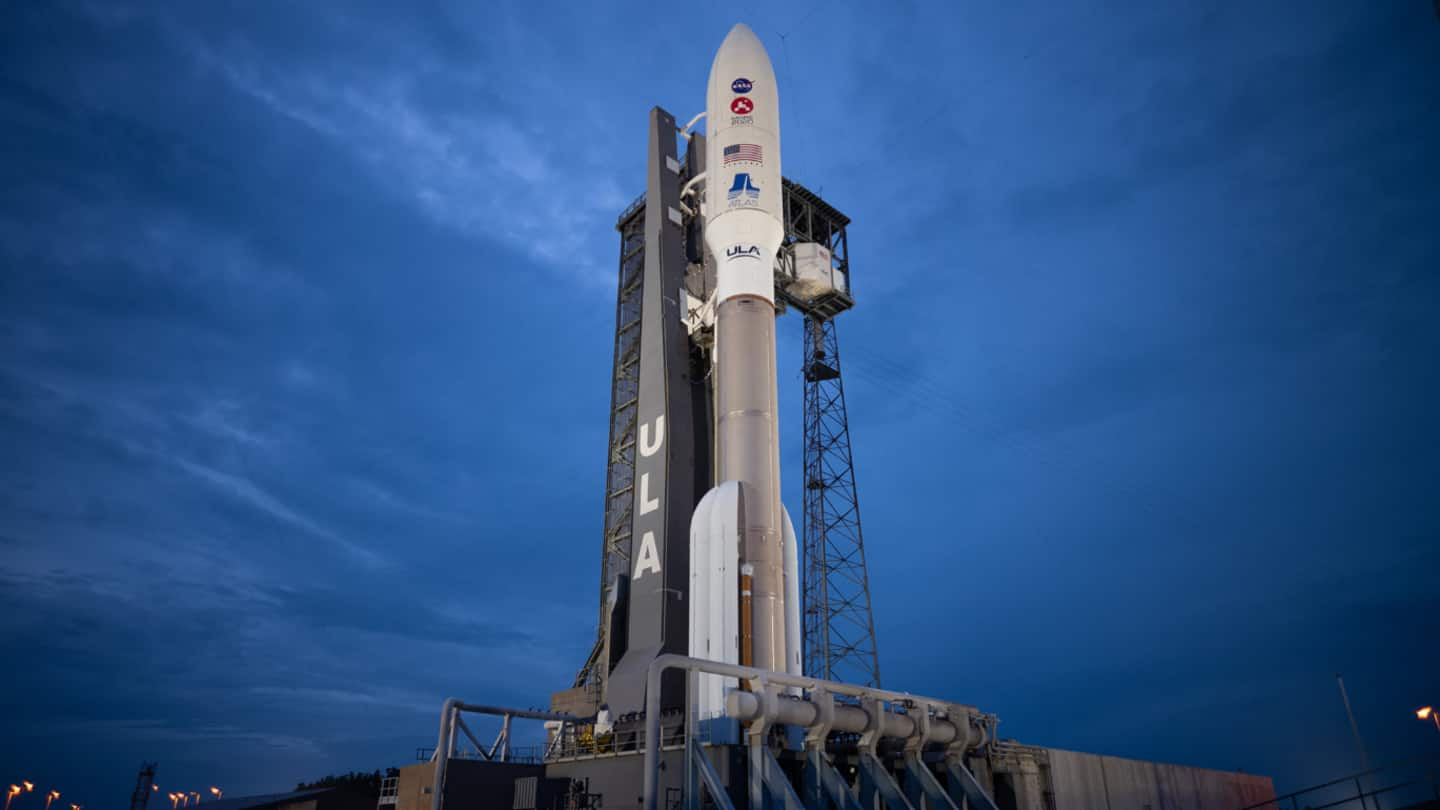
NASA launches rover to find 'ancient Martian life'
What's the story
In a major development, US space agency NASA has launched a robotic rover to Mars.
The vehicle, third to the Red Planet in a span of 10 days, is aimed at doing a lot of tech-backed work, with one ultimate goal — telling the world whether our close neighbor ever hosted any form of life.
Here's all about its mission.
Vehicle
Perseverance and its aerial sibling heading to Mars
Officially dubbed Perseverance, the one-tonne, six-wheeled SUV-sized rover lifted off from the Cape Canaveral Air Force Station, Florida, on an Atlas V rocket at 5:20 pm (IST).
It launched safely and will now take seven months to reach the planet. The rover has been paired with a drone-like helicopter to perform the first powered flight on Mars, making the heaviest payload to go there.
Journey
How the rover, helicopter will reach Mars?
Both elements of the mission will be making most of their journey encapsulated in a thruster-powered aeroshell.
Upon reaching Mars' orbit, sometime in February, this craft will perform a perilous seven-minute descent, bearing temperatures up to 2,100°C.
After reaching 7km from the surface, it will deploy parachutes to slow down, following which the rover's descent stage will fire retro-thrusters and position/land the vehicle safely.
Information
Descent stage will lower the payload using nylon ropes
For landing the rover, and the helicopter attached to its belly, safely, the descent stage will use four ropes, which will slowly lower the vehicle down to the ground and then detach. Once that is done, the stage will fly off to a safe distance.
Work
Then, the machines will get to work
Once the descent, which is the most harrowing part of the flight, is executed, the rover and helicopter will get to work at the landing site — a region just north of Mars' equator called Jezero Crater.
The 49-km-wide impact depression is one of the most interesting Martian sites as scientists think it was once home to a flowing river that formed a lake.
Possibility
Main mission: Search for ancient microbial life
Scientists believe that this flowing river may have deposited sediments - including rocks, sand, and other minerals, forming the conditions that may have allowed microbial life to thrive in the lake.
Perseverance will look for the signs of this ancient life by strolling in the crater and hunting biosignatures — a rock, mineral, or structure (chemical or organic matter) formed by living things.
Other work
It will also perform other essential tasks
Along with biosignature hunting, the Martian rover will drill out rock samples, encase them in tubes, and leave those tubes on the surface for future Earth return.
It will also study the crater's rocks, which preserve a record of several geological processes (from volcanism to cratering) that occurred on Mars, painting a clearer picture of the Red Planet's evolution over several billions of years.
Information
Plus, it will test how to produce oxygen
Among other things, Perseverance will use MOXIE, one of its instruments, to test how astronauts on future Mars missions could use atmospheric CO2 to produce oxygen which might be used for breathing and fuel.
Helicopter
What the helicopter would do?
As the rover does its job on the ground, the helicopter with counter-rotating blades will demonstrate the first controlled, powered, and sustained flight in the atmosphere of Mars, which is just 1% in density compared to that of Earth.
It will fly over the planet and use its 13MP camera to take colored images of areas where the ground-based rover could not reach.
Information
The rover is expected to work for 1 year
Perseverance will drill and study samples on Mars for at least one Martian year or 687 Earth days. However, going by the long life of NASA's previous rovers, its mission may eventually be extended.